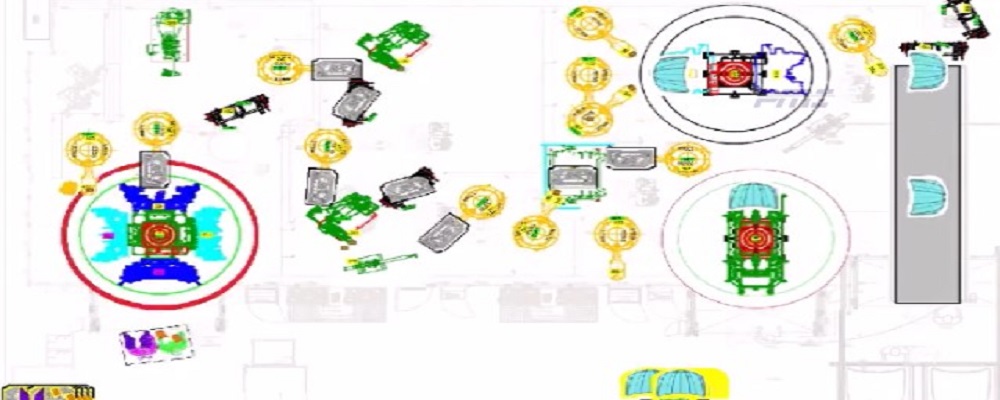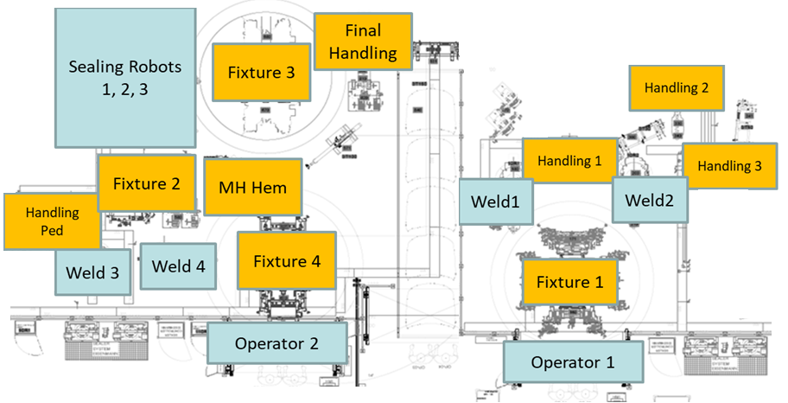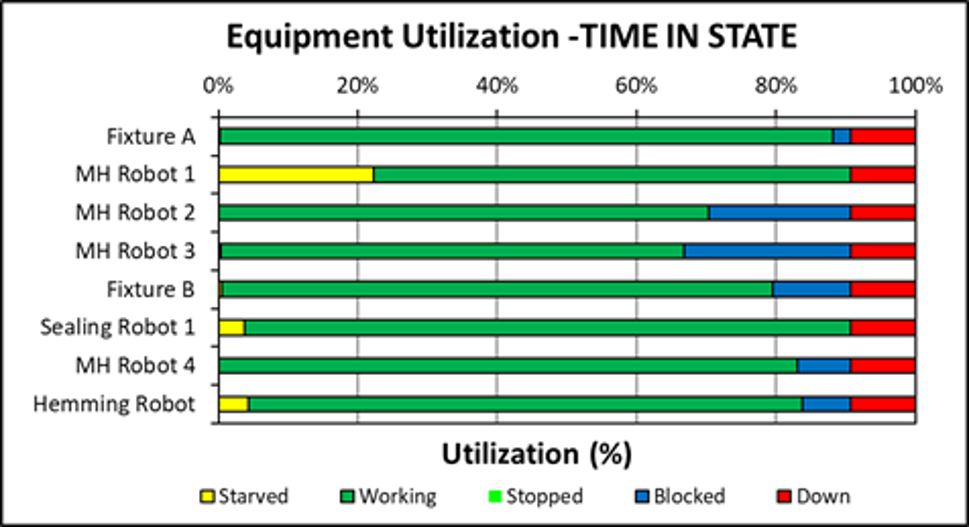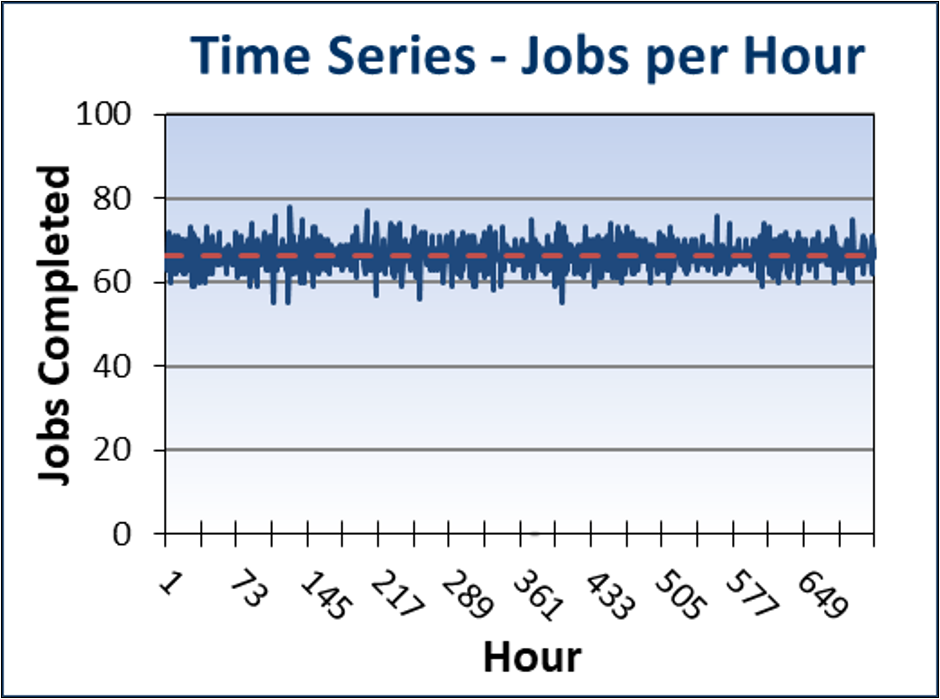
Introduction
Building an automated line is more than installing robots and conveyor belts, it’s about orchestrating flow with precision. For a top automotive line builder, creating a new automated closure line for the body shop of their customer was a high-risk endeavor. The goal was to develop a system that could provide high throughput and deal with intricate interactions between robotic cells, inspection stations, and material handling systems.
In order to guarantee that the design was meeting the desired performance levels, the client collaborated with Production Modeling India (PMI) to complete a detailed simulation study employing Tecnomatix Plant Simulation. The focus: validate feasibility, identify bottlenecks, and determine the optimal buffer sizes needed to meet daily production goals without overengineering the system.
Client's Challenge
• Validating the design’s feasibility for achieving the intended production rate
• Identifying process bottlenecks that could reduce overall efficiency
• Determining the minimum number of buffers required to maintain line balance without introducing unnecessary inventory or space usage
• Understanding the impact of downtimes and robot sequencing on throughput
The automation-heavy system required careful modeling to avoid hidden inefficiencies that could emerge only during runtime.
From 85% to 100% Throughput: PMI Eliminates Bottlenecks in Automotive Closure Line Design - A Case Study
PMI’s Simulation Strategy
PMI used Tecnomatix Plant Simulation to digitally replicate the proposed line with a focus on realistic operating behavior and interactions between work cells.
• The full closure line, from sub-assembly to inspection, was modeled.
• Client-provided downtime data and operating sequences were imported via Excel for accuracy.
• Key metrics such as throughput, buffer occupancy, and time-in-state graphs were recorded.
• Scenarios were run across various production rates and buffer configurations to assess performance under stress.
• Bottlenecks were identified using system utilization and idle time reports.
• Buffer sensitivity studies were performed to understand the trade-off between buffer size and throughput.

Findings and Recommendations
The simulation revealed some critical insights:
• The system, in its original configuration, was delivering only 85% of its designed capacity, falling short of the client’s target.
• The first bottleneck was located between an assembly station and the subsequent inspection station, where vehicles were frequently backing up due to insufficient buffer space.
Recommendation: A minimum buffer size was proposed based on sensitivity analysis. The simulation showed that even a slightly undersized buffer led to a noticeable drop in throughput, while the right buffer size allowed the line to operate at full efficiency.
• The second bottleneck was traced to a material handling robot whose operating sequence created delays in vehicle transfers.
Recommendation: Either reduce the robot’s cycle time or reprogram its task sequence to eliminate redundant motions. Simulation scenarios confirmed that even small improvements here had a significant impact on the overall line performance.
Conclusion
Simulation proved to be a powerful lens through which the client could view—and refine their automated closure line before commissioning. By identifying critical choke points and validating buffer needs, PMI enabled the client to move forward with confidence, armed with a design that not only looked good on paper but was proven to work in practice.
Through digital experimentation and precise modeling, the client gained the insights needed to unlock the full potential of their new body shop line.


